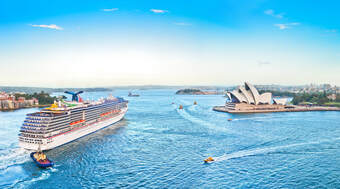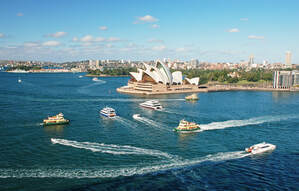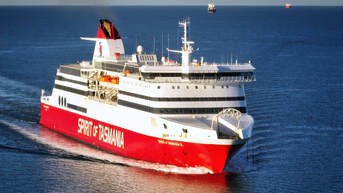Cruise Vessels & ManagementOur experts are current and former cruise masters, cruise line management, and company representatives.
|
Ferry TransportOur members sail at every rank onboard domestic passenger ferries.
|
Vehicle FerriesOur members operate the vehicle ferries which provide a vital link between Tasmania and mainland Australia.
|
Cruise Ships
Passenger cruises contribute $5.2 billion to Australia's economy each year, and more than 18,000 Australian jobs depend on the cruising economy. On average, a cruise ship arrives into Sydney Harbour every 18 hours.
Although they represent less than 1% of the world’s merchant ships, cruise and passenger vessels are high profile in their public awareness. Cruise ships are amongst the most technically complex ships ever built, and have very large crews. The sector includes cruise ships, passenger ferries, ocean liners and expedition vessels with many different product and service options and levels from budget to ultra-luxury. Some operate regular routes others worldwide seasonal operations and to remote regions.
The cruise industry is one of the most heavily regulated industries with robust, clearly defined standards. The average ship undergoes dozens of announced and unannounced safety inspections per year, involving hundreds of people-hours and the implementation of thousands of specific requirements set by the International Maritime Organisation (IMO) and various other authorities.
Operators and crew must have a high awareness of, and compliance with, public health, environment, safety and security with crew specialisations and training to meet or exceed national and international standards. Important to their operation is on time and efficient berthing and official clearance with good shore side infrastructure, supply chains and support services.
The cruise industry has a long history of ongoing review and improvement, with policies often exceeding requirements of international law. The industry welcomes and experiences strong third-party oversight at a Flag & Port State level.
Providing for the safety of passengers and crew is, at all times, the industry’s top priority.
Although they represent less than 1% of the world’s merchant ships, cruise and passenger vessels are high profile in their public awareness. Cruise ships are amongst the most technically complex ships ever built, and have very large crews. The sector includes cruise ships, passenger ferries, ocean liners and expedition vessels with many different product and service options and levels from budget to ultra-luxury. Some operate regular routes others worldwide seasonal operations and to remote regions.
The cruise industry is one of the most heavily regulated industries with robust, clearly defined standards. The average ship undergoes dozens of announced and unannounced safety inspections per year, involving hundreds of people-hours and the implementation of thousands of specific requirements set by the International Maritime Organisation (IMO) and various other authorities.
Operators and crew must have a high awareness of, and compliance with, public health, environment, safety and security with crew specialisations and training to meet or exceed national and international standards. Important to their operation is on time and efficient berthing and official clearance with good shore side infrastructure, supply chains and support services.
The cruise industry has a long history of ongoing review and improvement, with policies often exceeding requirements of international law. The industry welcomes and experiences strong third-party oversight at a Flag & Port State level.
Providing for the safety of passengers and crew is, at all times, the industry’s top priority.
Passenger & Vehicle Ferries
1.5 million passenger ferry trips were recorded on Sydney Ferries in January 2023. Sydney Ferries operate a fleet of 32 passenger ferries across 9 different lines, and average around 14 million passenger voyages per year. Sydney Ferries' maritime history dates back to the arrival of the First Fleet, where small ferry boats operated links between Sydney Cove and the farming settlement of Parramatta in 1789.
Australia operates two large vehicle ferries between Melbourne and Tasmania - the 'Spirit of Tasmania' I and II totalling a combined 10,000 DWT. A new era is set to begin for Spirit of Tasmania, with the arrival of two new ships in 2024 – Spirit of Tasmania IV and V.
Two other companies run this route namely 'Sea Road' and 'Straitlink' with two modern vessels each. These vessels, under the Australian flag, provide daily freight services between Tasmania and Melbourne.
Australia operates two large vehicle ferries between Melbourne and Tasmania - the 'Spirit of Tasmania' I and II totalling a combined 10,000 DWT. A new era is set to begin for Spirit of Tasmania, with the arrival of two new ships in 2024 – Spirit of Tasmania IV and V.
Two other companies run this route namely 'Sea Road' and 'Straitlink' with two modern vessels each. These vessels, under the Australian flag, provide daily freight services between Tasmania and Melbourne.



